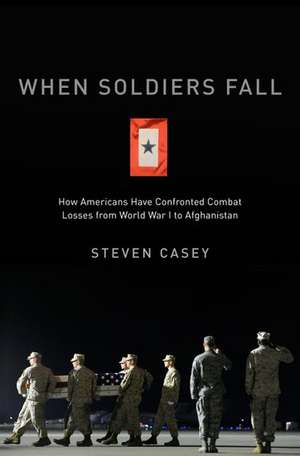When Soldiers Fall: How Americans Have Confronted Combat Losses from World War I to Afghanistan
Autor Steven Caseyen Limba Engleză Hardback – 23 ian 2014
Preț: 283.44 lei
Preț vechi: 350.18 lei
-19% Nou
Puncte Express: 425
Preț estimativ în valută:
54.23€ • 56.63$ • 44.89£
54.23€ • 56.63$ • 44.89£
Carte tipărită la comandă
Livrare economică 25-31 martie
Preluare comenzi: 021 569.72.76
Specificații
ISBN-13: 9780199890385
ISBN-10: 0199890382
Pagini: 320
Ilustrații: 15 hts
Dimensiuni: 236 x 163 x 28 mm
Greutate: 0.56 kg
Editura: Oxford University Press
Colecția OUP USA
Locul publicării:New York, United States
ISBN-10: 0199890382
Pagini: 320
Ilustrații: 15 hts
Dimensiuni: 236 x 163 x 28 mm
Greutate: 0.56 kg
Editura: Oxford University Press
Colecția OUP USA
Locul publicării:New York, United States
Recenzii
Casey has written a thorough, thoughtful account of how casualty figures were reported and used during U.S. wars in the 20th century. The author's archival and secondary source research is impeccable.
Notă biografică
Steven Casey is Reader in International History, London School of Economics














